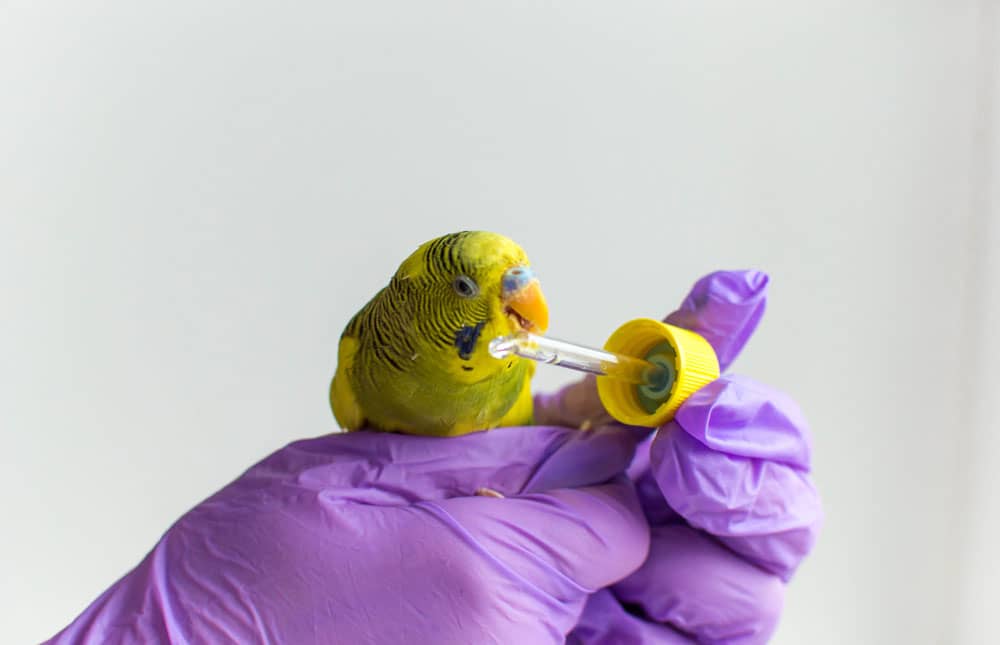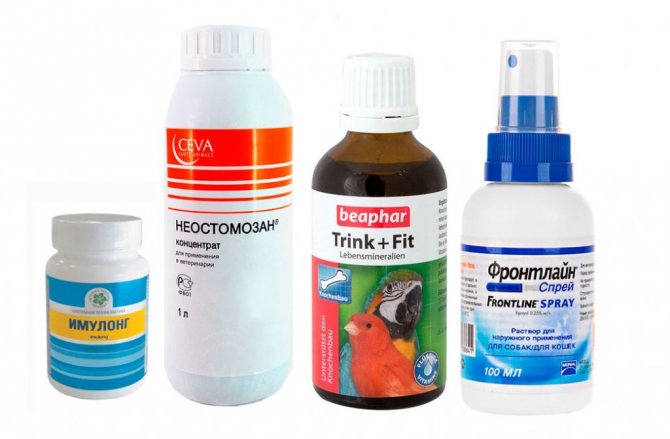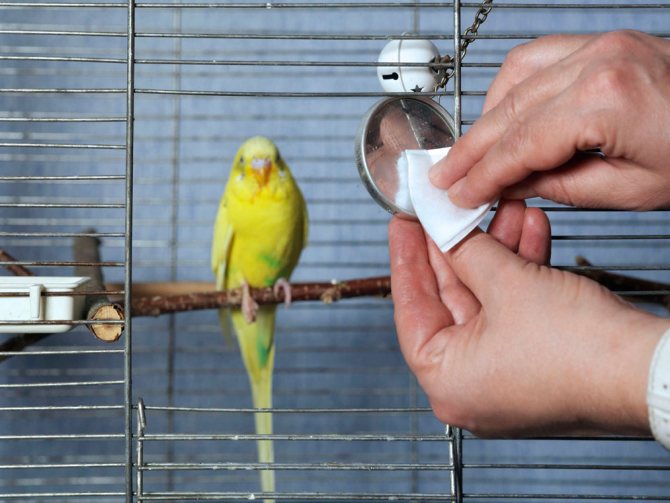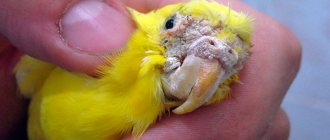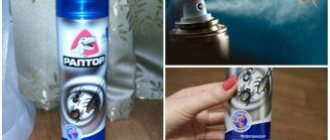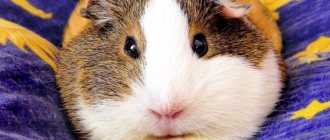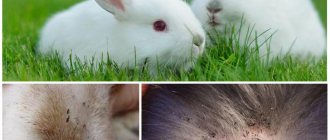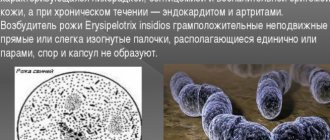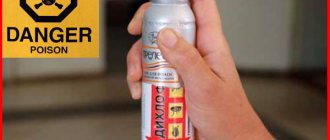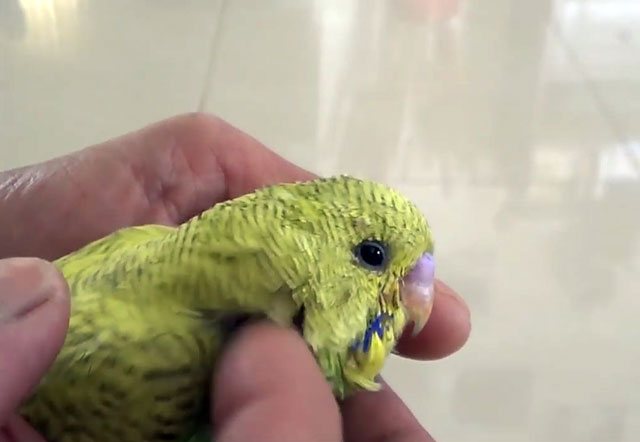
The scabies mite in the budgerigar can bring him huge problems. A small insect can cause great discomfort to a pet, thereby interfering not only with his life, but also threatening his health. But the tick is not the only one who makes life difficult for a bird with its work. In this article, we'll look at the main parasites that budgies can develop and how to deal with them.
What fleas can threaten parrots?
The so-called chicken flea is a small blood-sucking parasite in a parrot. It is the birds that have a body temperature of 40-42 degrees, which is preferred for an insect. This type of arthropod was found in chickens and eventually adapted to the plumage of parrots. You can also meet fleas at your pets, usually living on pigeons, ducks, sparrows, swallows, titmouses.
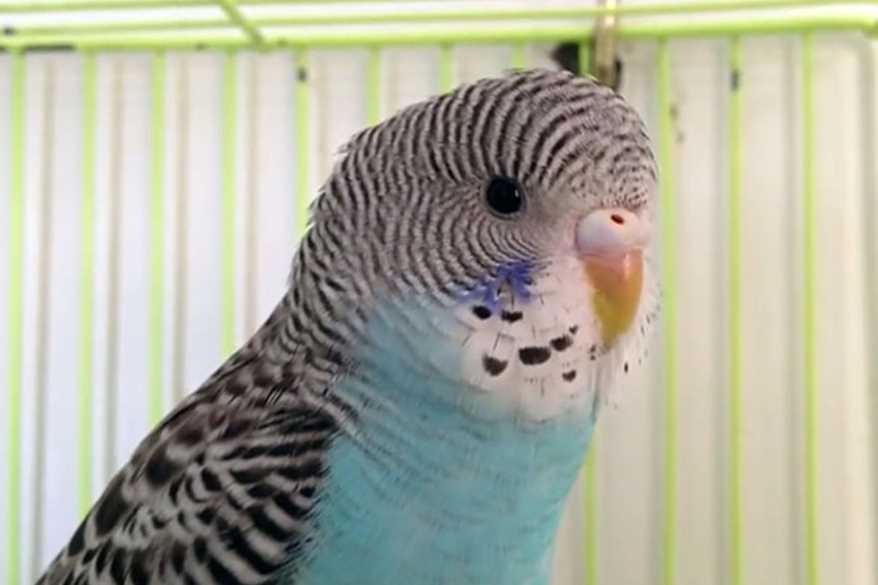

What fleas can budgies have?
The size of an adult insect is about 2-2.5 mm. It is also characterized by the presence of a laterally flattened brown body and three pairs of legs, the back of which is adapted for jumping.
Only mature individuals bite. They regularly visit their prey for food, most of their lives live in nests or bird houses, where they breed. With the help of a special proboscis, predatory arthropods pierce the skin in the region of the capillaries and suck blood. In the absence of access to birds, they are able to bite humans or pets.
Parrot treatment
There are different remedies for the treatment of feathered pets. It is not recommended to independently choose the method of how to remove fleas from a parrot. Better to see your veterinarian. The drugs are toxic, so they should be used only when insects have been detected. Be sure to read the instructions for use. Failure to comply will lead to complications or death of the pet.
Frontline is intended for the treatment of cats and dogs. There is no consensus among veterinarians on the acceptability of its use for the treatment of poultry. Some doctors consider it to be the most effective remedy, while others argue that it is dangerous.
If your pet is accustomed to hands, you can use Celandine. The medication is applied to the body, after which the bird is held for 10 minutes so that it does not shake off and clean the plumage.
Spray Canina Petvital Verminex has a softer effect. It is made from natural herbal ingredients. These drops also destroy other parasites: ticks, bedbugs.


Canina PETVITAL Verminex will help to remove fleas from parrots.
It is not recommended to use Beaphar in the form of a spray or drops. It helps against parasites badly, and getting into the organs of the gastrointestinal tract of a parrot will lead to life-threatening consequences.
You can combine the use of medicines with traditional medicine, but you should not use them as independent ones due to their low effectiveness.
Bathing in a saline solution helps with fleas. To prepare a therapeutic bath, take 1 liter of water at room temperature and 2 tbsp. l. table salt. The loose component must be completely dissolved in the liquid. The bird is gently immersed in the bath so that its head remains on the surface. The duration of bathing should not exceed 5-7 minutes. When the procedure is complete, the pet is returned to the pre-treated cage.
Why are fleas dangerous for parrots?
Fleas not only cause a lot of concern to the bird and its owner, but also carry dangerous pathogens, helminths. Sucking a lot of blood, they can cause anemia, exhaustion, dermatitis at the site of the bite, and constant itching and irritation of the skin lead to nervous disorders in the parrot.
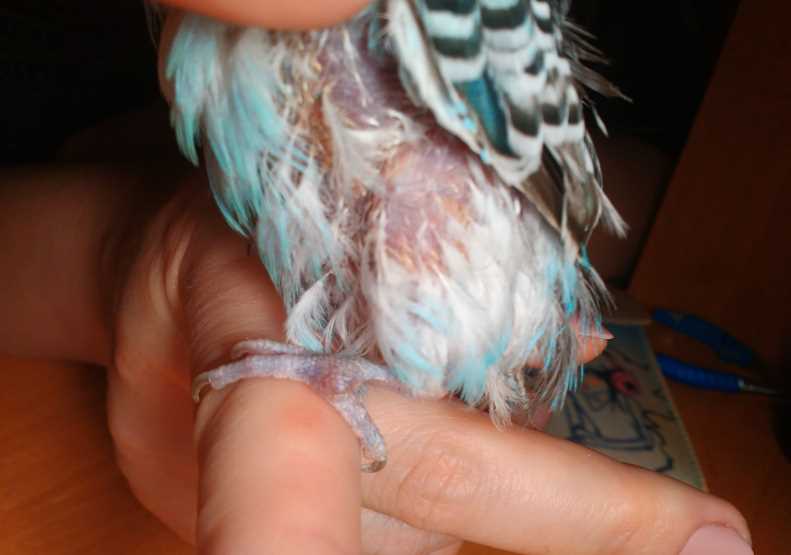

What do fleas threaten the health of the budgie
When pecking up an insect, it is possible for helminths to penetrate directly into the body. Infection with a bacterial or viral infection is also likely through contact with a flea-carrier of tularemia, plague, salmonellosis, listeriosis, typhus and others. Moreover, not only the feathered pet itself, but also its owner can get sick.
Read also
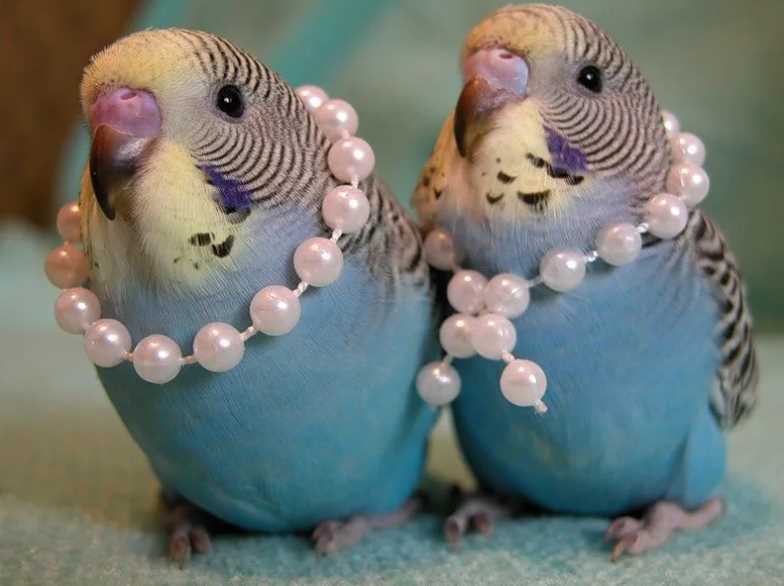

How to cheer up a wavy parrot
Ways of infection with parasites
The main rule of prevention against parasites is regular sanitary disinfection and treatment with special insecticides of the birdhouse and all its contents - from perches and toys to bowls for food and drink and other equipment. But, in addition, there are separate preventive measures for each type of parasite.
Prevention of tick infestation of a parrot includes:
- The right choice of high quality feed with healthy additives.
- Providing adequate nutrition and a suitable feeding regimen.
- The presence of vegetables and fruits in the menu (before feeding them to the bird, the products must be doused with boiling water).
- Identification of new quarantined parrots.
To prevent the appearance of fleas in a parrot, the following measures should be taken:
- Covering the bottom of the pet's cage with twigs of wormwood - this plant, with its strong aroma, scares away many parasites.
- Regularly bathing the bird in a bath with ash - this activity allows, as they say, to combine business with pleasure (a parrot likes this kind of care and, moreover, it will protect him from parasite infestation).
- It is imperative to quarantine all new pets for the required period.
- Change the bedding in the cage regularly.
As part of the prevention of infection of a pet by eaters, it is necessary:
- Treat all corners (the main place of accumulation of parasitic insects).
- Completely replace the litter (it is better to cover the bottom of the cage with paper and sprinkle crushed calendula or chamomile on top of it).
- Move the cage to fresh air, but only in sterile places.
- Avoid pet contact with free birds - pigeons, sparrows, etc.
To prevent infection of a parrot with worms, you need:
- Constantly renew fresh water in the drinking bowl;
- purchase only high-quality food and give it to the bird exclusively within the established shelf life, preventing the pet from eating expired or spoiled products;
- remove perishable foods not eaten by a pet from bowls after 4-6 hours;
- include fresh vegetables and fruits in the menu of your feathered pet;
- periodically analyze the litter of not only the parrot, but also all the pets living in the house;
- always wash your hands before handling your pet.
In a house where budgies are kept, parasites can enter in various ways:
- through the ventilation holes;
- from damp basements and attics, where pigeons like to hide - they are the carriers of fleas in natural conditions;
- you can bring parasites into the house on clothes;
- infestation of other pets.
Often, you can buy a budgerigar already infected with fleas in the market, where several birds are kept in one aviary.
Birds living on the street are more often sick. Parrots, however, can also become infected.
Pests enter the birdcage in different ways:
- through ventilation;
- from basements and attics;
- from infected birds and animals;
- from food, cages and toys purchased in the markets;
- from furniture, shoes, clothes and other things.
In addition, the pet may be infected while still in the pet store.
There are a number of guidelines to help prevent infection. Hygiene must be observed:
- arrange wet cleaning every day in the room where the pet lives;
- remove leftover food from the feeder every evening;
- regularly wash the drinker, replace the old water with fresh;
- carry out monthly processing of the cell using an alcoholic tincture of chamomile or eucalyptus.
Every day it is required to put a container of sand in the cage, to which powder from parasites has been added. If there are already other birds in the aviary, the new pet will have to be kept separately for some time to avoid possible infection.
Since the scent of wormwood repels fleas, it is possible to place several branches of the plant near the cage. You will have to regularly replace them with new ones, since only fresh plants emit odorous substances. Sometimes add ash to the bath.
Treatment should be started as soon as an infection has been detected. If in doubt, it is best to show the parrot to the veterinarian.
The main symptoms and manifestations of fleas
The signs of the appearance of different types of ectoparasites on the body of a bird are similar and look as follows:
- The pet becomes restless, nervously and often cleans feathers, itches on surrounding objects.
- With a large number of blood-sucking insects, he can rush around the cage and scream loudly.
- The bird loses a lot of feathers, takes on an untidy appearance.
- The budgerigar has sleep disturbances.
- Gradually, the pet's condition worsens, due to stress, appetite disappears, the body is depleted.
- If you do not provide help in time, the feathered friend becomes lethargic, hides his head under his wing, sits at the bottom of the cage, and does not respond to external stimuli.
- An allergic reaction can develop to insect bites, the severity of which is individual for each individual. In this case, the following are observed:
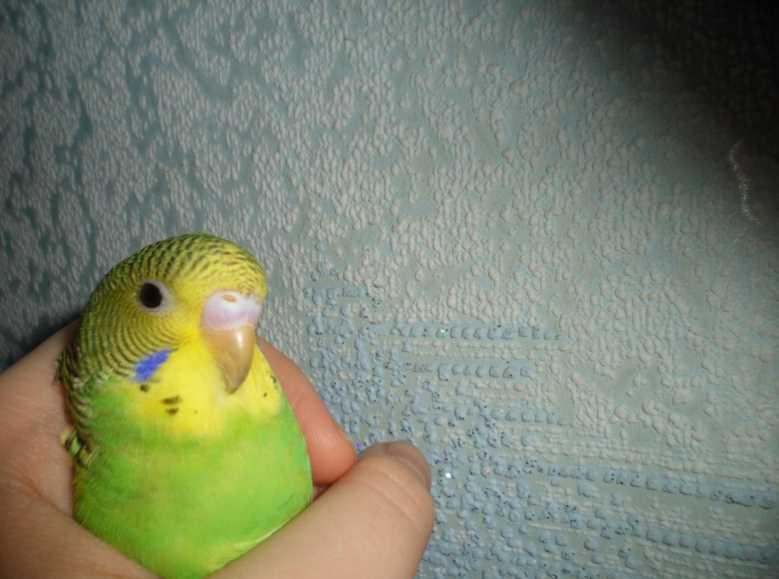

How to understand that a parrot has fleas
- severe itching;
- irritation at the site of the bite;
- swollen lymph nodes;
- fever;
- chills.
- The condition can be complicated by bacterial and viral diseases carried by the flea. In this case, the clinical picture is complemented by the symptoms of these infections.
- A decrease in immunity leads to the activation of fungi, helminths, saprophytic microflora and, as a result, the development of mycoses, invasive diseases or dysbiosis.
- Often the peak of activity of carnivorous arthropods coincides with the breeding period of birds. For chicks, parasites are especially dangerous, as they can quickly lead to their death.
Bird self-inspection
It is not difficult to distinguish a healthy parrot from an infected one. A healthy pet is characterized by:
- Cheerfulness;
- gaiety of spirit;
- liveliness of reaction (to everything around).
If the pet is healthy, its chirping and bird songs are heard all the time. During rest, the parrot stands on one leg. There are also characteristic outward signs of health and wellness:
- The bird's eyes are wide open;
- feather cover is smooth, saturated color.
There are much more possible signs of the disease in a parrot. These include:
- Lethargy;
- diarrhea or constipation;
- trembling and chills;
- contamination of feathers under the tail;
- change in the appearance or shape of the beak and claws;
- change in droppings or problems with stool;
- cough;
- inactivity;
- the presence of discharge from the nose or eyes;
- baldness and loss of feathers;
- the formation of seals in the body;
- rounding of the abdomen;
- swelling of any part of the body;
- lack of appetite;
- passivity;
- an increase in temperature (may appear in certain places);
- redness of the eyes;
- loss of balance;
- the appearance of scale-like growths on the legs or beak;
- limping;
- problems with the gastrointestinal tract;
- irritation or redness of the anus;
- stratification of the beak;
- self-plucking;
- intense thirst or refusal to drink;
- nausea;
- heavy breathing (sometimes wheezing or wheezing);
- thickening of the joints;
- deterioration in the appearance and quality of the feather cover.
If the bird lies on its stomach or sits crumpled, this is a cause for alarm. Birds behave this way when they feel unwell. In addition, it is worth taking a closer look at the pet if it sleeps on both legs. It is also worth visiting your veterinarian if the parrot:
- When inhaling and exhaling, it moves the entire body;
- almost does not open his eyes or squints;
- constantly shakes his head sharply;
- keeps the beak open all the time;
- itches strongly and often;
- does not use one of the paws at all and periodically bites it.
Any of the symptoms mentioned (and even more so their combination) is difficult not to notice, unless, of course, the pet is left to itself. These signs cannot be ignored - the problem will only get worse. If you find alarming symptoms, you should immediately contact your veterinarian-ornithologist. The parrot does not have a strong body, and the development of diseases occurs at an incredible speed. It is important to remember that procrastination can cost a bird his life.
It is difficult to detect pests on your own. A person cannot see bite marks. Although dark brown bodies stand out on bright plumage, fleas are rarely seen in the early stages.
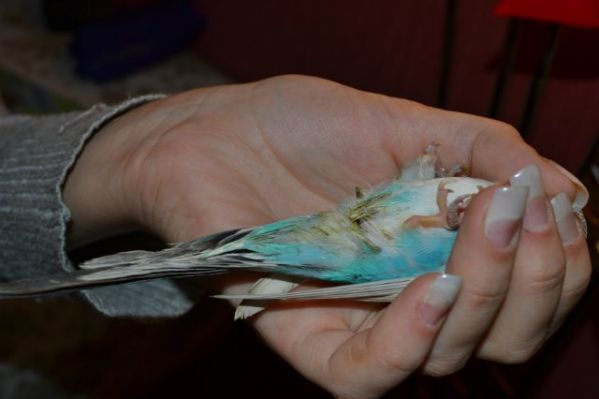

In order to recognize the problem in a timely manner, parrots must be examined frequently.
Insects move quickly, and parrots rarely allow their owners to pick them up.
If there is a suspicion of the presence of parasites, an inspection is recommended. You need to handle the bird with care so as not to harm it.
Some parrots refuse to be examined and peck at their hosts. In such a situation, it is recommended to contact a veterinary clinic.
How to detect parasites on your own?
Most of the time, fleas are in nesting houses of parrots, where they lay eggs, hatch larvae. Young insects feed on bird droppings and food debris. And only after reaching puberty do they begin to suck blood.
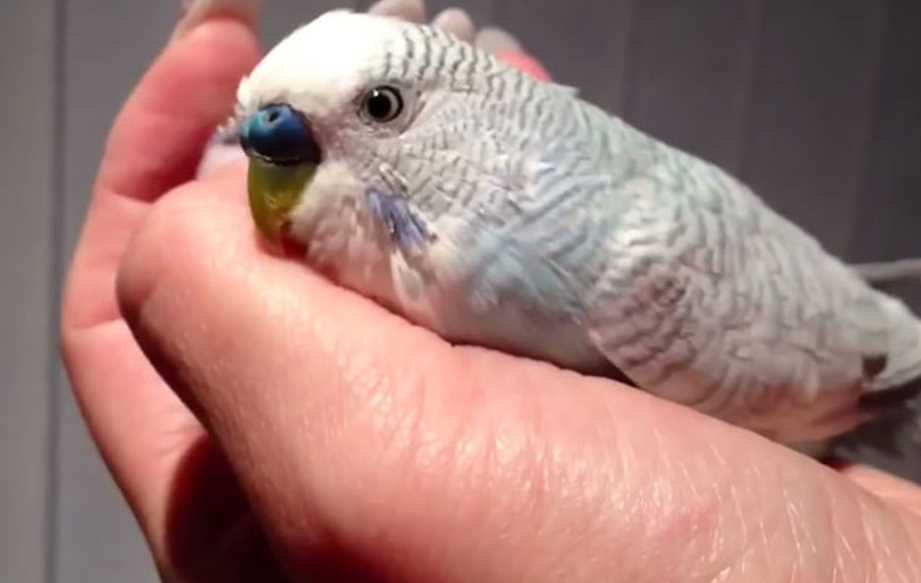

How can you identify parasites in a parrot at home?
Accordingly, a close inspection of the cell or nest will help detect white worm-like larvae, pupae, or adults. The eggs are too small and not visible to the naked eye.
The flea itself can also be found on the pet's body. Gently take the bird and inspect it sequentially, spreading the feathers apart. Do this as often as possible, because the insect is small in size and moves quickly, which makes it easy to miss.
The danger of parasites
Insects carry diseases that are life-threatening to parrots and humans: typhus, plague, tularemia, salmonellosis, hepatitis B and C, and plague. They can also infect a pet with helminth eggs. Due to pests, the mental state of the bird worsens, anemia develops. The general condition becomes worse: the parrot becomes lethargic and apathetic, he eats worse, sleeps poorly.
Fleas are also dangerous to humans and other pets. Parasites can jump on them and bite painfully.
Ways to get rid of adversity
Pet treatment
There are special medications for flea treatment. Before using them, it is imperative to consult a veterinarian. Only a specialist will be able to accurately determine the type of ectoparasite that bothers the bird, and will prescribe the correct means of dealing with it. The doctor will select the dosage so as not to harm the parrot, based on its type, size, state of health.
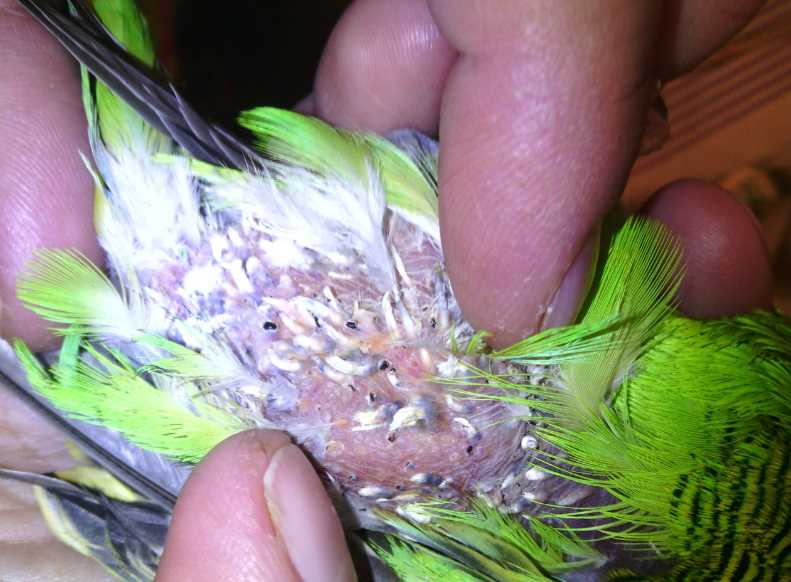

How to cure a parrot
Anastomozan, Piren-D, Frontline, Ivamek, Neostomazan, Beofar and others can be appointed by a veterinarian. Each product is selected individually, as it has its own characteristics in the application. If the feathered friend easily allows you to control yourself, you can use Celandine powder for treatment.
There are medicines that are soluble in water and applied with a spray bottle or by taking a warm bath with a bird. There are medications, the ingress of which on the feathers is undesirable. They are applied to the bare skin of a parrot.
Read also
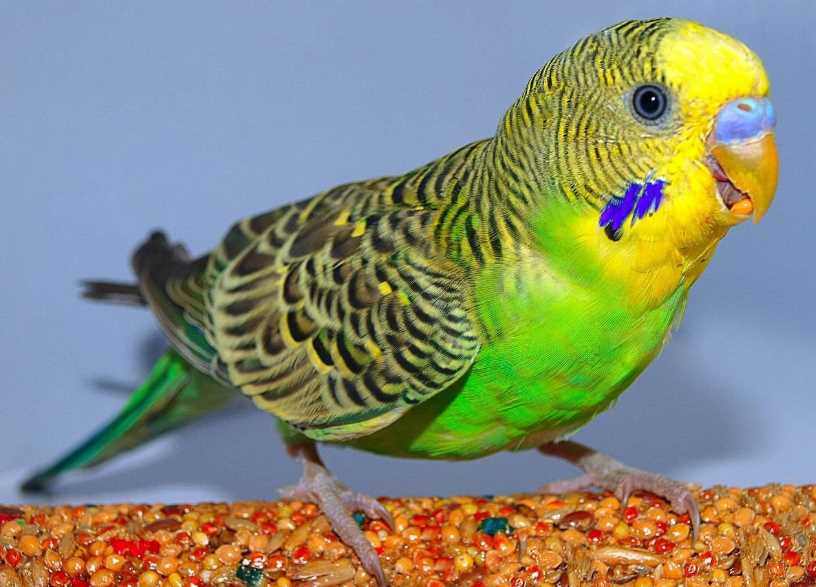

What to do if a parrot coughs
To atone for the wavy, hold the pet's wings with one hand, with the other protect the head from getting the medicine. Dip the parrot in the solution for 7-10 seconds, manually remove the insects from the head area, release the pet and let dry. The water temperature should be at least 33-35 degrees, and there must be no drafts in the room. Remember that the bird's body is already weakened by the disease, which means that it should not freeze.
Disinfection of cages and accessories
The fight against the parasite is carried out in a comprehensive manner. It is not enough to treat the pet itself; in parallel, the cage, the nesting house, and nearby objects are treated with chemicals.
For this period, the bird must be planted in another room, and returned no earlier than a day after the treatment and airing of the room. Before returning the bird, the cage must be disinfected with a soap and soda solution. It is better to replace wooden elements, or remove for a few days and re-process.
Folk remedies scare away insects, but only insecticides are capable of destroying the eggs or pupae of the parasite. When using funds of this group of substances, it is necessary to observe precautionary measures: protect the skin of the hands with gloves, and the respiratory system with a mask. The choice of drugs is quite wide, for example, Neocidol, Butox, Prometrin and others.
Prevention as a guarantee of bird health
For prophylactic purposes, when replenishing the family with a new bird, it must first be kept in quarantine, disinfected and only then put in a common cage. The parrot's room should be cleaned in the morning and evening using water. Free the feeder from food debris at night, wash the drinker with hot water. Sift special sand at the bottom every day, and at the end of the week replace it with a new one along with branches of repelling plants.
Perform monthly general cleaning of the bird's house, followed by processing it with a solution of wormwood, chamomile, eucalyptus. High-quality care, attentive attitude to the pet's behavior, timely measures to remove parasites and daily prophylaxis will prevent infection or eliminate it in its infancy. If the time is lost, the parrot is seriously ill, immediately rush to the doctor with him.
Check out articles on similar topics
- How fleas bite a person
- How to get rid of fleas in an apartment and a private house
- How to get rid of fleas from your dog
- How to get rid of basement fleas
Comments (1)
leave a comment
Possible complications
Within a month, the likelihood of re-infection is high. It is worth being vigilant during this period, regularly inspecting the bird and its home. It is better to repeat the disinfection of the pet's cage several times. Analyze how the fleas entered your house, keep the room clean.
The condition of the bird can be complicated by the addition of an infection, the pathogens of which are carried by a flea, an exacerbation of a fungal or invasive disease. In this case, additional treatment of concomitant pathology is required.
Home processing
It is necessary to process the cage in order to destroy the remaining adult insects, their larvae and eggs. If this is not done, the budgerigar will be re-infested with parasites.
The cell is treated in a similar way. Each twig must be wiped thoroughly. You can return the bird to the home only after the procedure is completed.
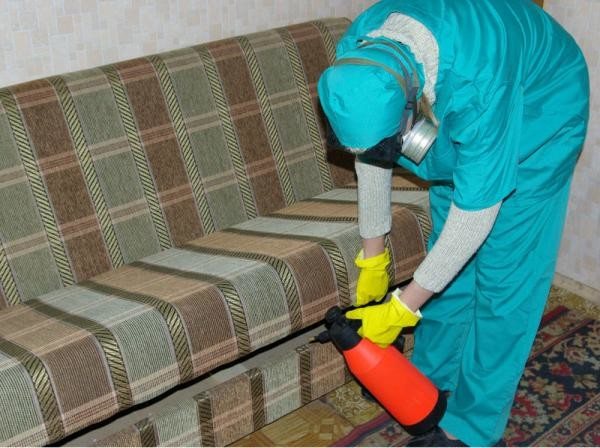

In order to prevent secondary flea infestation, not only the bird cage, but also the entire room space should be treated.
You need to process not only the parrot's cage, but the whole apartment.This will have to be done even if the pet has never left its home. Carry out wet cleaning.
Can a person get infected from a parrot
Unfortunately, fleas can also spread to humans. Therefore, it is necessary to act immediately upon detection of an ailment. This is especially dangerous for people with sensitive skin. Symptoms include a tooth, an unpleasant sensation on the skin, redness, irritation.
It is necessary to carefully process the entire apartment and consult a dermatologist. However, more often than not, fleas remain on parrots and do not infect humans.


The parasites will not stay on the body of the budgerigar for a long time. But even in a short period, fleas can cause great harm to a parrot, since they are carriers of a wide variety of diseases, such as tularemia (fever, inflammation of the lymph nodes) and head lice. With pediculosis, the skin is strongly irritated where the parasites are in charge. Fleas are able to weaken the immune system of a pet, causing anemia and leading it to nervous breakdowns.
Ways of getting fleas into a room where there are a lot of parrots:
- With things brought from the street;
- Through ventilation shafts;
- From the attic or basement;
- With purchased feed;
- From other birds.
Very often, a parrot is already bought with fleas. Since in the poultry market, in crowded conditions, the infection of birds occurs from each other.
Most often, fleas appear in those parrots that live on the first or last floors. This is due to the fact that pigeons, which are carriers of fleas, like to live in attics.
Distinctive features of bloodsuckers
Experts say that bird parasites are unable to bite or settle on human skin. Fleas in parrots differ in appearance from other insects, but at the same time they resemble their canine "relatives": six legs and a flattened body. The maximum length is 5 mm. Bloodsuckers are clearly visible on the body, since they are brown.
The lifespan of small pests does not exceed 15 days. In such a short period of time, they lay a huge number of eggs. The traditional habitat is bird nests. The resettlement of birds does not give any effect, due to the ability of the parasites to jump high enough.
Flea Control Products
The elimination of the problem should be comprehensive. It is not enough to treat the bird. You will need to disinfect the room, the cage. In case of severe infection, the cage is discarded. After careful processing, the apartments are purchased new housing for the parrot. In addition to insecticides, the complex of procedures should include vitamins, minerals, drugs that will enhance immunity. When diagnosing anemia, iron-containing agents are added. Only a veterinarian can tell how to properly treat a parrot or a pigeon.
Chemicals
Timely and correct treatment is the key to a quick recovery of the feathered friend. To get rid of parasites, two drugs are recommended in 80% of cases: Frontline or Ivermec. Piren-D and Anostomazan are popular and serious means. The funds are used exclusively in veterinary procedures.
Important! It must be remembered that the use of chemical drugs is necessary after a thorough study of the instructions for their use. If the bird is tired from fleas, infected with other infections (ticks, worms, etc.), then chemical preparations may not give the desired result.
Attention! Substances with a chemical composition are not applied to the plumage. Only on the body. After all, fleas can bite only on the body, and not on the feather.
Insecticides
Neostomosan is widely used to kill parasites. The insecticide is the most harmless to the parrot and pigeon at all stages of the development of infection. The application is simple. There are two options for processing birds:
- Spray your pet with a spray bottle and process in accordance with the instructions.
- Bathe in the prepared solution.At the same time, it is forbidden to get the insecticide on the area of the eyes and head.


The solution of Neostomazan is prepared as follows: diluted in warm water immediately before use. The dosage of the drug should be taking into account the body weight of the bird and its size. The specified substance is used as a means for disinfecting cells. But it is better to pick up also an additional substance for disinfection.
Folk remedies and medicinal herbs
Medicinal herbs such as eucalyptus, rosemary, thyme, wormwood and mint effectively save fleas from fleas. It is these plants that will help rid the parrot of fleas. Decoctions are made, in which they bathe the feathered friend.
How quickly medicinal plants eliminate the problem can be said only after being applied in practice at the stage of infection. More herbal infusions and solutions are suitable for prevention, treatment of cells and premises. It is also impossible to determine the best from the list. They all have fungicidal properties.
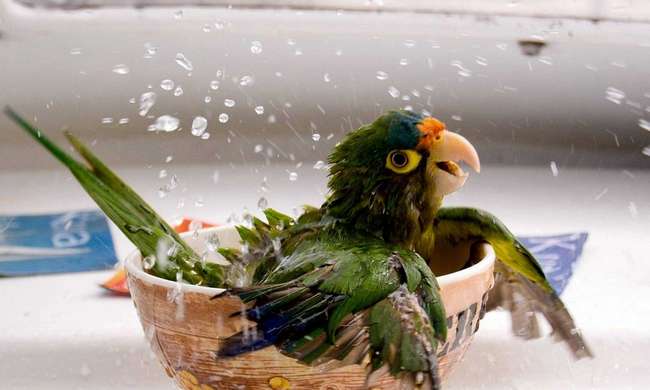

Need to know! It is advisable to use medicinal herbs for prevention. It is enough to hang them in bunches in the corners, spread them out near the cage with a parrot. The strong smell does not harm the bird, but it repels fleas.
Bird flea features
Surprisingly, little bloodsuckers are extremely selective when it comes to choosing a host. That is why there are practically no canine or feline insects in parrots. In case of an involuntary hit on a bird, they cannot survive.
Only bird fleas can thoroughly settle on birds. All street dwellers - starlings, sparrows, swallows, chickens and ducks - pose a potential danger to budgies. If we talk about city apartments, then fleas often appear on the lower and upper floors. Pigeons hide in attics, and dangerous insects "roam" with them.
There are cases when the new owner acquired a bird already infected with bloodsuckers. This is most often the case with budgies purchased from bird markets. The birds actively contact each other in their cages, which invariably leads to the infection of healthy pets.
What is the difference between a bird flea? How does it affect the feathered victim?
As we said earlier, there are practically no differences, that is, there are not many of them. The main difference from other species is very interesting. So, bird fleas live strictly in a bird's nest, and very rarely indoors. Flea mating occurs only at the moment when the bird is constantly in the nest, that is, during the period of direct nesting. If the bird flies or rarely visits the nest, fleas quickly get out and look for a new home, where the bird is now in place.
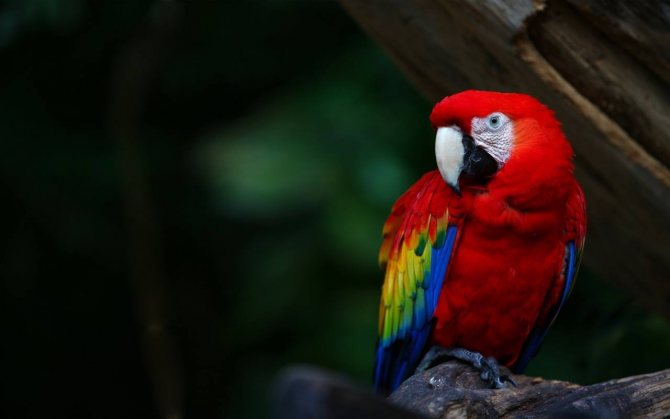

But they act very wisely, not forgetting to lay eggs even in the nest that they leave. Upon the return of the bird to the nest, the pupae turn into fleas, and everything starts again in a circle.
Bird fleas are very cunning and therefore have a high survival rate.
Do they harm a person
Many parrot owners, when faced with this parasite species for the first time, ask themselves the most important question: are fleas transmitted from birds to humans? Usually they do not live on a person, but they can be transmitted and harm him in the form of bites, which will soon begin to itch quite a lot.
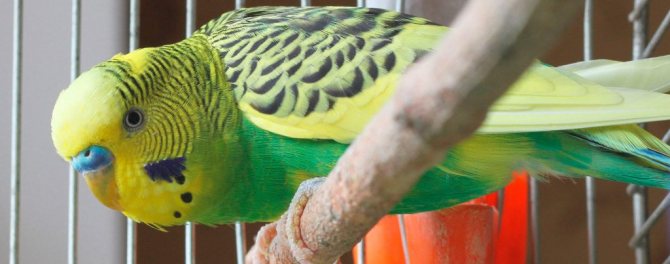

You should limit any physical contact with the bird and set the parrot's cage further away from you and other family members, especially from where you sleep and your children.

